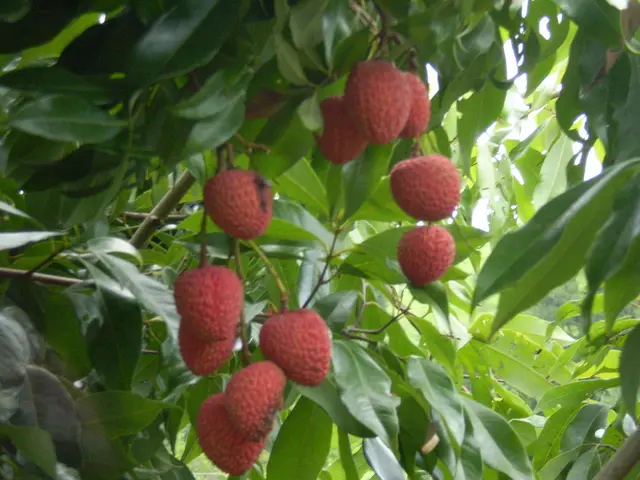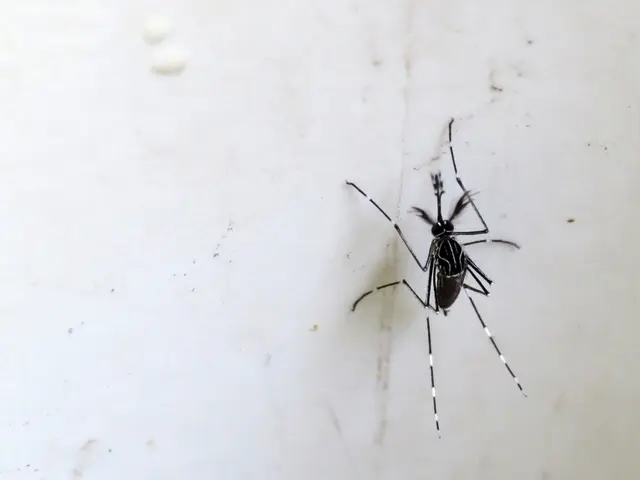Guard Your Strawberry Crop: Watch Out for These 7 Strawberry Diseases to Safeguard Your Berries
Strawberry Woes: Identifying and Battling Common Strawberry Diseases
Every berry-lover's dream, nothing compares to the sweet satisfaction of picking fresh strawberries from your own garden. But, growing these tasty treats requires some care to maintain a thriving, disease-free strawberry patch. Here's a rundown of the most common strawberry diseases, their telltale signs, and how to give your fruitful friends the best chance of survival.
Navigating Strawberry Diseases
Identifying diseases in strawberry plants can be tricky, as some symptoms overlap with those of pests. Thorough examination is key. Keep an eye on both fruit and foliage for sudden or unusual changes in color, texture, and overall health. And don't forget that some diseases can also affect the strawberry plant's roots!
1. Anthracnose
Dreaded by strawberry growers, anthracnose is a fungal disease most common in warmer regions but possible in cool, wet climates too. It causes a variety of fruits, crowns, and plant rot. If caught early, fungicide treatment combined with the removal of infected matter might save some plants.
2. Black Root Rot
Black root rot can be the result of soil-dwelling pathogens or nematodes. Infected strawberry plants look weak, and you'll find black or shriveled roots. To prevent black root rot, ensure your soil is well-draining and maintain proper spacing between plants.
3. Leaf Spot
Leaf spot is another common strawberry disease characterized by gray-white lesions on foliage, which deepen in color over time and cause leaves to dry and fall prematurely. Spread by wind and water, the disease is challenging to treat, with complete removal of infected plants being the most effective measure.
4. Leaf Scorch
Look out for leaf scorch as it can lead to a rapid decline in plant productivity. Symptoms closely resemble those of leaf spot, with infected leaves browning and dying quickly. Implement good watering and garden sanitation practices to prevent leaf scorch.
5. Mold
Botrytis cinerea, a fungus, causes mold on strawberry plants and is most likely to occur during cool, wet spring conditions. Plants affected by mold develop a gray, hairy appearance and may experience rapid rot. Improve air circulation and use fungicide for prevention and treatment.
6. Powdery Mildew
Powdery mildew is more problematic when multiple plants are bunched together as spores spread easily. Symptoms include a white, powdery substance on leaves, curling foliage, and eventual leaf drop. Fungicide can slow the progress of this disease, but proper sanitation and the removal of infected matter are essential.
7. Verticillium Wilt
Verticillium wilt is among the most prevalent pathogens to affect edible plants. It is usually contracted when plants are grown in soil containing the pathogen. Sudden wilt or drooping foliage followed by leaf browning are early signs of infection. To prevent the disease, select resistant varieties when growing strawberries in raised beds and avoid planting in areas where the pathogen is known to be present.
Prevention Tips
To reduce the risk of strawberry diseases:
- Practice good crop rotation and garden sanitation, including removing plant debris at the end of each season.
- Use drip irrigation to minimize water on leaves and reduce fungal diseases.
- Ensure proper air circulation by spacing plants appropriately.
- Monitor plants regularly for signs of disease or pests, and address pest populations promptly to prevent making plants more susceptible to disease.
Now that you know the most common strawberry diseases and their characteristics, you'll be better equipped to grow healthy, bountiful strawberries all summer long!
In the process of nurturing a thriving strawberry patch, it's essential to recognize the signs of various diseases that could impact the home-and-garden environment, such as leaf spot, anthracnose, and powdery mildew, as these can compromise the overall health of your strawberry lifestyle. To maintain a healthy garden of strawberries, employ preventive measures, including proper spacing, good water management, and regular inspection.








